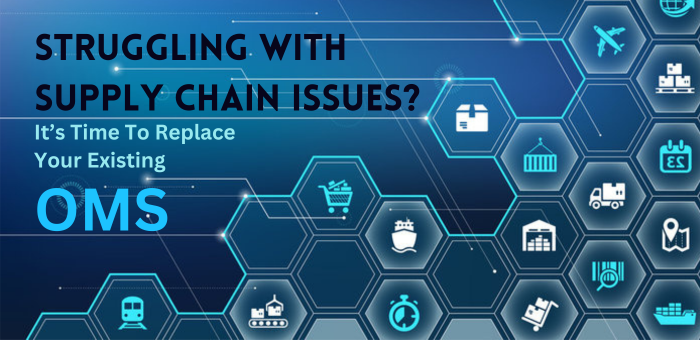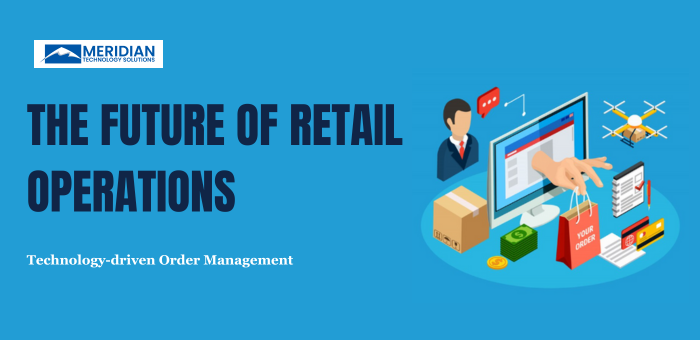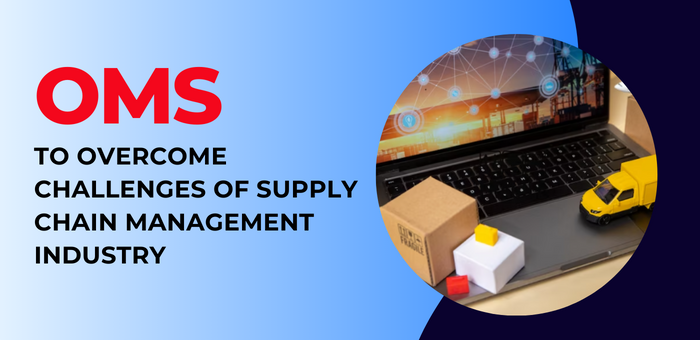Struggling with Supply Chain Issues? Its Time To Replace Your Existing OMS
Supply chain management is a cornerstone of modern business operations. Supply chain management is essential for businesses to gain a competitive edge in the market. This requires effective planning, coordination, optimization of every step involved in the production as well as distribution of goods and services.
Supply chain management is instrumental in meeting customer demands and maintaining high levels of customer satisfaction. Enhanced supply chain operations are significant to meet the rising demands of consumers and provide them with the solutions they are looking for!
Timely deliveries, accurate order fulfillment, and consistent product quality are all outcomes of a well-managed supply chain. Satisfied customers are more likely to become repeat buyers and brand advocates.
However, many businesses are still grappling with supply chain issues, often stemming from outdated Order Management Systems (OMS).
Issues with Supply Chain
Supply chain issues encompass a multitude of challenges and disruptions, which can disrupt the seamless flow of goods and services from suppliers to consumers. These supply chain issues can resonate through industries and impact negatively on the businesses’ production, consumers, and so, the global economy.
The most common supply chain issues include demand-supply imbalances. In demand-supply imbalances, a disconnect between customer demand and a company’s supply capabilities can lead to stock outs, overstock situations, and missed sales opportunities.
Another big challenge is faced in logistics and transportation. This includes delays, capacity constraints, and rising freight costs. All these can hinder the timely movement of goods within the supply chain.
Problems with suppliers, such as quality issues, delays, or disruptions due to factors like natural disasters, can undermine the reliability of the supply chain. Inadequate visibility into inventory levels, order statuses, and production progress can lead to operational inefficiencies and suboptimal decision-making.
The increasing complexity of global supply chains, along with compliance challenges and the need to coordinate various stakeholders, poses an ongoing hurdle. Moreover, cybersecurity threats loom large as supply chains digitize, potentially leading to cyberattacks and data breaches. Regulatory changes, labor shortages, sustainability concerns, and unforeseen events like pandemics can further exacerbate these issues.
Successfully addressing supply chain issues demands proactive planning, efficient management, technology adoption, and adaptability, enabling businesses to maintain a competitive edge and deliver products and services reliably to their customers.
The Importance of a Reliable OMS
Order Management Systems are the backbone of any supply chain operation. They are responsible for handling orders, inventory, and fulfillment processes. An efficient OMS ensures that products are delivered to customers on time, minimizing costs, reducing errors, and enhancing customer satisfaction. It acts as a central hub, connecting various parts of the supply chain, including sales, inventory management, and shipping.
Challenges of Existing OMS
While OMS systems have been around for decades, many businesses are still using outdated, legacy systems that are no longer equipped to meet the demands of today’s complex supply chains. Here are some of the challenges posed by legacy OMS:
- Lack of Scalability: Legacy OMS often lack scalability, making it challenging for businesses to adapt to changing market conditions or expand their operations. As companies grow, their order volumes and complexity increase, and an inflexible OMS can hinder growth and efficiency.
- Inadequate Integration: Modern supply chains involve numerous touch points, from e-commerce platforms and marketplaces to third-party logistics providers and warehouses. Legacy OMS systems often struggle to integrate seamlessly with these various components, leading to data silos, inefficiencies, and errors.
- Limited Visibility: Legacy OMS systems often provide limited visibility into real-time inventory levels and order statuses. This lack of visibility can lead to stockouts, overstock situations, and poor decision-making.
- Inefficient Order Routing: Routing orders to the appropriate fulfillment centers or locations is a critical task in supply chain management. Legacy OMS systems may use outdated algorithms that do not optimize routing, resulting in increased shipping costs and longer delivery times.
- Inflexible Rules and Workflows: Supply chain operations are dynamic and require the ability to adapt quickly to changing circumstances. Legacy OMS systems often have rigid rule-based workflows that cannot accommodate the flexibility needed to respond to unexpected events or customer demands.
- High Maintenance Costs: Maintaining and updating legacy OMS can be expensive and time-consuming. Customizations and fixes may require specialized skills and resources that strain the IT budget.
- Poor Customer Experience: Ultimately, legacy OMS can lead to a poor customer experience. Late deliveries, order inaccuracies, and limited communication can frustrate customers and damage brand reputation.
The Case for Replacing Your OMS
Given the above challenges posed by existing OMS, it’s essential for businesses to consider replacing them with modern, agile solutions for improved outcomes. Here are some compelling reasons to make the switch:
- Improved Scalability: Modern OMS solutions are designed with scalability in mind. They can adapt to the changing needs of your business, whether you’re experiencing growth or seasonal fluctuations in demand.
- Seamless Integration: A modern OMS can seamlessly integrate with various components of your supply chain, including e-commerce platforms, inventory management systems, and third-party logistics providers. This integration leads to better data visibility and more efficient operations.
- Real-Time Visibility: Modern OMS systems provide real-time visibility into inventory levels, order statuses, and performance metrics. This transparency allows you to make informed decisions, optimize inventory, and prevent stockouts.
- Efficient Order Routing: Advanced algorithms in modern OMS systems optimize order routing, reducing shipping costs and improving delivery times. This optimization is crucial for meeting customer expectations in the age of fast and free shipping.
- Flexible Rules and Workflows: Modern OMS solutions offer flexibility in configuring rules and workflows, enabling you to adapt to changing market conditions and customer demands swiftly.
- Cost Savings: While implementing a new OMS system involves an upfront investment, it can lead to significant cost savings in the long run. Reduced shipping costs, lower inventory carrying costs, and increased operational efficiency contribute to a positive return on investment.
- Enhanced Customer Experience: A modern OMS can help you deliver an exceptional customer experience by ensuring accurate orders, timely deliveries, and effective communication throughout the order fulfillment process.
Selecting the Right OMS for Your Business
Choosing the right OMS for your business is a critical decision that requires careful consideration. Here are some factors to keep in mind when evaluating OMS options:
- Scalability: Ensure that the OMS can scale with your business’s growth and adapt to changing market conditions.
- Integration Capabilities: Look for an OMS that offers robust integration capabilities with your existing systems and partners.
- Real-Time Visibility: Prioritize OMS systems that provide real-time visibility into inventory and order status, helping you make data-driven decisions.
- Order Routing Optimization: Seek OMS solutions that use advanced algorithms to optimize order routing and reduce shipping costs.
- Flexibility: Choose an OMS that allows you to configure rules and workflows to match your unique business processes.
- Cost-Effectiveness: Consider the total cost of ownership, including implementation, maintenance, and licensing fees, to ensure the chosen OMS fits your budget.
- Customer Support: Assess the level of customer support and training provided by the OMS vendor to ensure a smooth transition and ongoing support.
- By selecting the robust OMS for your business and investing in the future of your supply chain, you can set yourself for growth, profitability, and sustained success in a dynamic business environment.
Conclusion
Supply chain efficiency is a non-negotiable requirement for success. Old or existing OMS systems can impede your ability to meet customer demands, optimize operations, and remain competitive. Therefore, if your organization is struggling with supply chain issues, it’s time to consider replacing your existing OMS with a modern, agile solution.
Don’t let existing OMS hold your supply chain back; it’s time for an upgrade.
Remember that choosing and implementing a new OMS is a significant undertaking that requires careful planning and execution. You should consult with the experts like Meridian Technology Solutions in supply chain management and technology. This helps you ensure a smooth transition in the whole process and also, maximize the benefits of your new OMS.
If you have any doubts, feel free to reach out to us.





